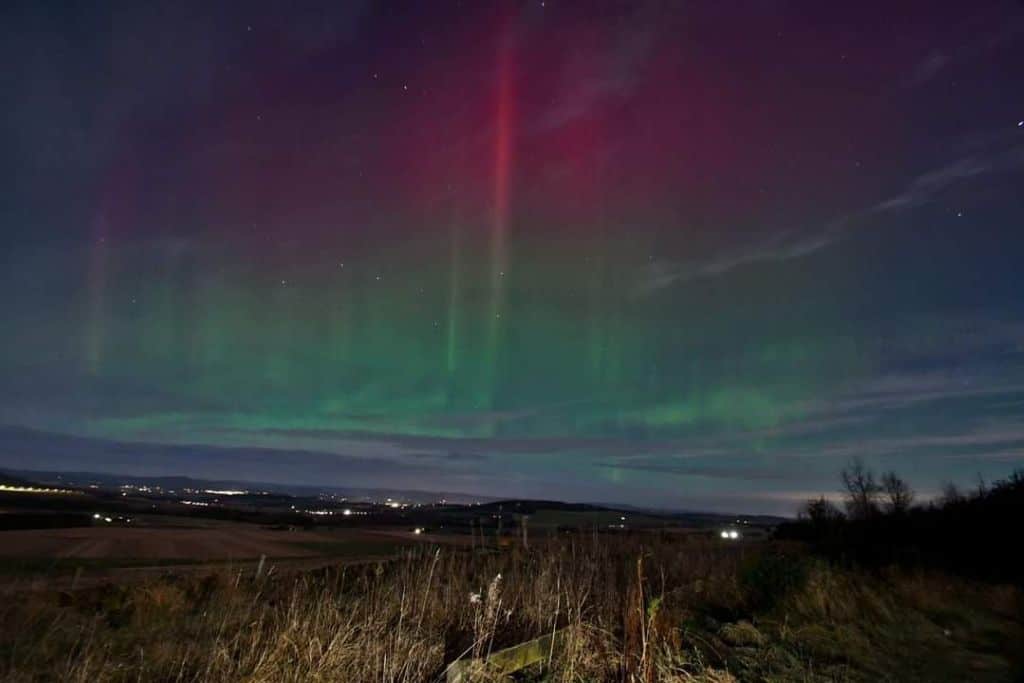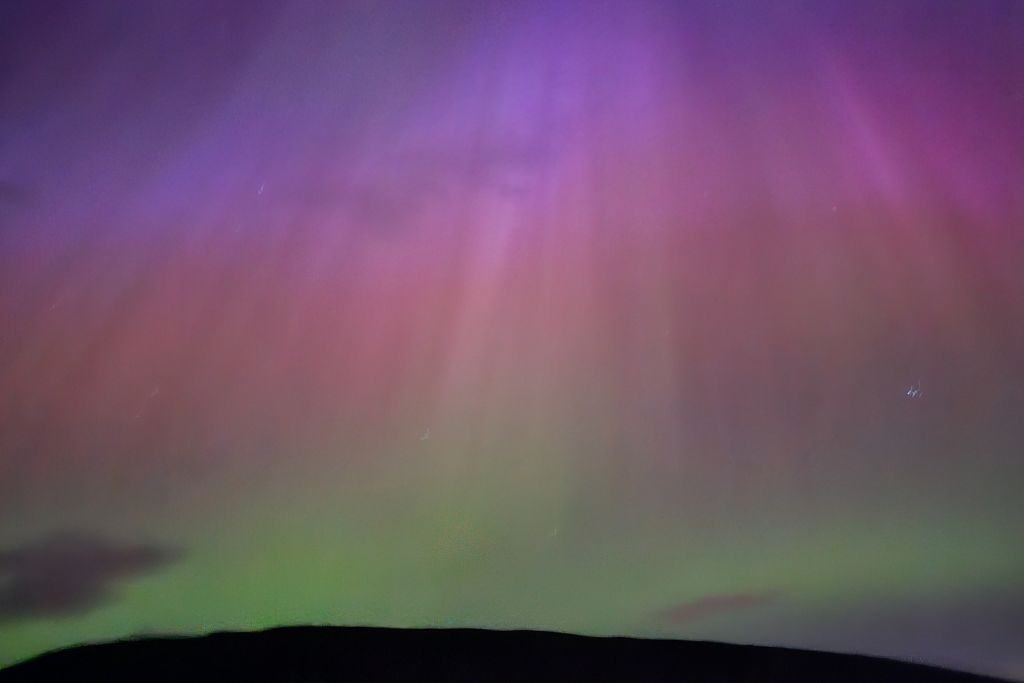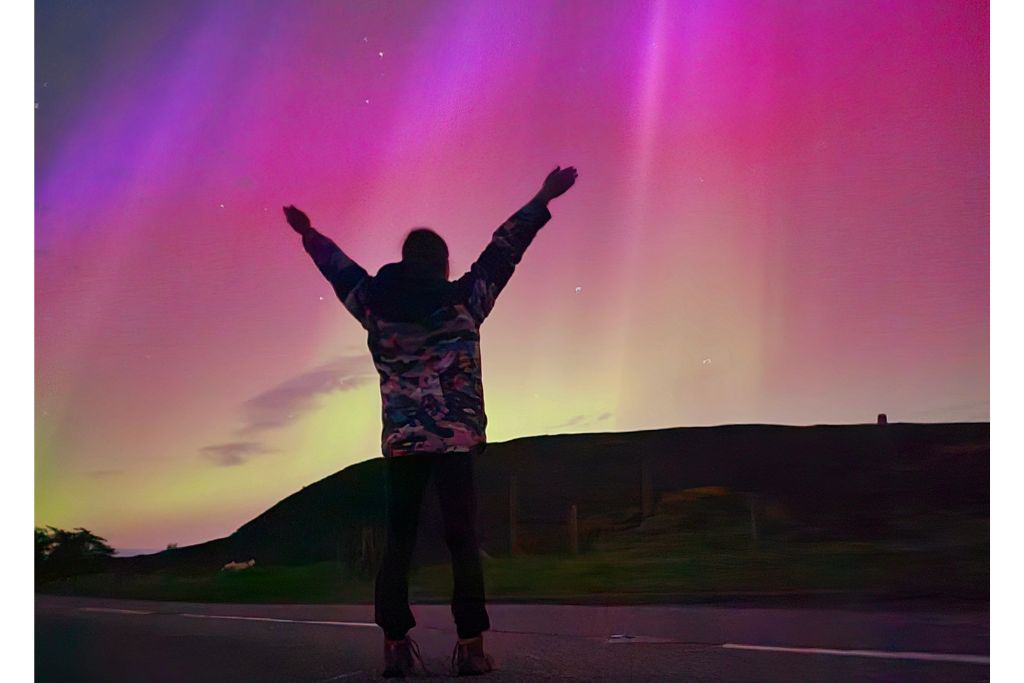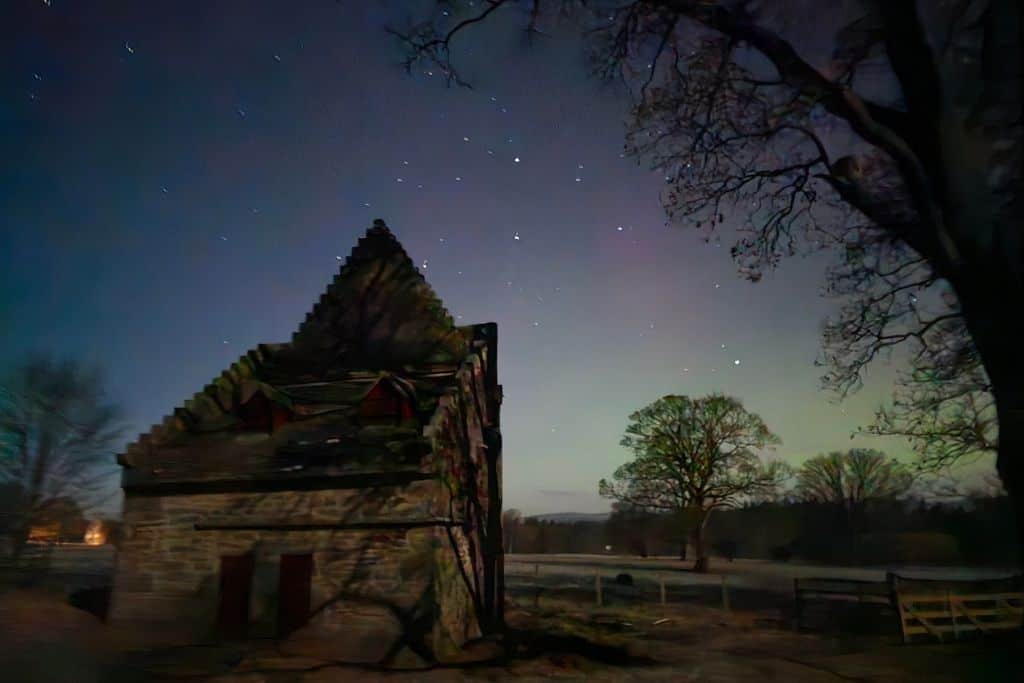Northern Lights: Tips for Viewing and Photographing the Aurora
Do You Want Tips On How To See And Capture The Northern Lights?
The Northern Lights are a true natural wonder. Their spectacular light displays are high on many families’ bucket lists, but how can you increase your chance of seeing them?
As a family keen to explore the night sky, we have seen the Aurora Borealis in Scotland and Iceland.
Finding them can be challenging, but we’ve put together some invaluable tips for witnessing and capturing the mesmerising Northern Lights.

Our top tips for preparing for the Northern Lights
If the solar wind is promising and the skies are clear, go somewhere dark. Stay away from light pollution and obstructed views, and then look north. Be patient, but take a photo as cameras can pick up the Aurora better than the human eye.

Top Tips for Northern Lights Viewing With Kids
There are a few things your family can do to increase your chances of seeing the Northern Lights when your timing aligns with promising conditions in a destination that sees Aurora activity.
Tip 1: Be Realistic With Your Expectations
When viewing the Northern Lights, be realistic about what and if you might see. Understanding that the aurora’s appearance can be unpredictable and weather-dependent. Prepare your family for a long wait and not seeing anything.
Tip 2: Be patient And Flexible
Weather and aurora activity can be unpredictable, so be ready to adjust your plans to stay longer or change position. Bring warm clothes, snacks, and activities to keep the little ones entertained while you wait for the light display.
Tip 3: Understand The Science
Explain the science behind the Aurora to kids to make the Northern Lights adventure educational and exciting. Tell them how the lights form when the sun’s charged particles collide with Earth’s atmosphere, mixing with gases to create vibrant colours in the sky. This will enhance their curiosity and make the experience more memorable for you all.
Tip 4: Download An Aurora Tracking App
Enhance your Northern Lights adventure by downloading an Aurora tracking app. These apps provide real-time updates on aurora activity, increasing your chances of witnessing this magical phenomenon. It’s a fun and educational way for the whole family to anticipate and enjoy the celestial display.
Tip 5: Go To A Remote Location Out Of Built Up Areas
For the best Northern Lights experience, head to a remote location away from lights. This ensures darker skies, making the aurora vivid and magical.
Tip 6: Turn off Lights
Turn off your torches or car headlights to let your eyes adjust to the dark when chasing the Northern Lights. This enhances the aurora’s visibility and makes the experience more magical for the whole family.
Tip 7: Be Prepared For Reduced Sleep
Be prepared for late nights or disturbed sleep. The best viewing times are often between 10 PM and 2 AM, so assess if kids will tolerate the disruption before setting out.
Tip 8: Look North
While the Northern Lights can sometimes be seen from various directions, they are primarily observed when facing north.
Tip 9: Check The Weather Forecast
Before heading out to see the Northern Lights with your family, always check the weather forecast. Clear skies are essential for a good view; if there is complete cloud cover, your chances could be better.
Tip 10: A Full Moon May Ruin Your Plans
A full moon can outshine the Aurora, making it harder to see and enjoy the vibrant colours. Check lunar calendars against the weather forecast for optimal viewing conditions for your adventure, and aim for nights with little to no moonlight.
Tip 11: Dress Warmly
When chasing the Northern Lights, dressing appropriately for the weather is crucial. Layer with thermal clothing, hats, gloves, and windproof outerwear to stay warm and comfortable in cold destinations. Despite this, our toes and hands quickly become cold, even with layers, and we have used warmers to continue enjoying this magical experience.
Tip 12: Eye V’s Camera
While your eyes can detect the beam of colours, they might not perceive them as vividly as your camera or smartphone. Unless you experience a strong solar storm, you may have to take photos to appreciate the Northern Lights.
Tip 13: Take A Northern Lights Tour Or Group Trip
Embark on a Northern Lights tour for a hassle-free family adventure. Experienced guides lead you to prime viewing spots, hoping everyone can glimpse the breathtaking Aurora Borealis. They also offer insights, safety tips and hot beverages.
Tip 14: Self-Drive
While an organised trip may be an option, having your own vehicle offers freedom to chase the Northern Lights. A car allows you to drive away from light pollution to remote and dark areas to maximise your chances. Self-driving also provides a place to sit and wait in the warm, which is essential for kids.

Northern Lights Photography Tips
While you might be able to see strong Northern Light activity with your eyes, don’t expect the display to be vibrant, and more commonly, it can only be seen through a camera. Therefore, to help you capture stunning photos of the Northern Lights with a smartphone or camera, here are some helpful tips:
- Phone cameras can capture Aurora photos as well as DSLRs
- Set your camera to night mode or its manual setting with an aperture of f/2.8, ISO 100-1600 and a 15-second (or shorter) shutter speed.
- Use a prop or stand to hold the phone or camera steady.
- Frame the night sky with trees, buildings or water.
- Practice taking night photos in the lead-up to a display.

Understanding the Northern Lights
You have our tips to increase your chances of seeing the Northern Lights; now, to understand what, why and where we get the magical beams in the night sky.
What are the Northern Lights?
The Northern Lights, also known as the Aurora Borealis, paint the night sky with hues of dancing beams, creating a natural light show. These green, pink, blue, and purple beams create a magical glow across the northern sky, produced by solar flares near the earth’s magnetic poles.
Science Behind the Aurora Borealis
The Aurora Borealis is formed when charged particles from the sun collide with Earth’s atmosphere, creating a mesmerizing display of colour in the night sky in the polar regions.
Legends whisper that the lights are the spirits of the past, dancing at night, while science tells us of magnetic fields and solar winds. They unite us in awe, reminding us of our world’s wonders.
You’ll see pinks when atomic oxygen molecules interact at high altitudes. Blues and purples are produced with molecular nitrogen reactions. Pinks and blues are only seen in intense solar activity. Green light is emitted due to high oxygen concentrations at lower altitudes, making it the most common display across northern skies.
Best Locations for Viewing the Northern Lights
The lights are most visible in the northern skies, particularly in high-latitude areas near the Arctic Circle.
The darkest location, away from lights, is best for witnessing the Northern Lights. Destinations furthest north towards the Arctic Circle see optimum displays. Light pollution, including the moon, can mask any chance of seeing the Aurora and being at a higher vantage point without hills, buildings, or trees can be beneficial.
The polar regions offer spectacular displays of the Northern Lights, but with intense solar activity, the beams could be visible over a larger area, including Europe and the USA.
Canada, Iceland, Norway, Finland, Sweden, Greenland and Russia are all popular destinations for viewing the Northern Lights. Although sightings are still not guaranteed, your chances are much higher due to their closeness to the Arctic Circle.
These northern countries also have the longest and coldest hours of darkness in winter, providing exciting family activities to do while waiting for the natural spectacle, such as skiing, dog sledging, or visiting Santa’s village.

What Time Is Best To See The Northern Lights?
While no one knows exactly when or where you can see this natural phenomenon, checking the Aurora forecast increases your chance of seeing it. Although some of the sightings come down to luck, such as being in the right place at the right time and looking in the right direction, the forecasts are also good.
The best time of year to see the Northern lights is between September and April, when the night sky is the longest and darkest. Ultimately, the best time is during a strong solar wind on a clear night.
If weather conditions are not ideal, e.g. a dark, clear sky and a lack of moon, the chances of seeing the phenomenon are extremely low.
Family-Friendly Activities While Waiting for the Lights
Observing the Northern Lights can be a patience game. If you are with children, prepare fun activities to entertain the whole family.
We saw children on a Northern Lights bus tour in Iceland who were not permitted to be on the coach; they were cold and bored. Try to limit too much time waiting with kids by timing your arrival to high activity.
We suggest storytelling, stargazing, torch-lit nature walks (away from viewing areas), games, a book and hot chocolate. If you are in popular tourist areas in the Arctic region, you can combine waiting for the lights with dog-sledging or visiting Santa’s Village.

Are The Northern Lights Worth Seeing?
The Aurora Borealis is a natural wonder in all its glory, but you must be patient! Unlike many other world wonders, timing is key, making seeing the lights even more special.
While the Northern Lights cannot be seen everywhere on Earth, there are many opportunities each year to witness the dancing burst of lights from both the northern (Aurora Borealis) and southern (Aurora Australis) polar regions.
We have seen the Aurora Borealis by eye several times in Scotland and only via the camera in Iceland. The displays were presented differently on each occasion, making seeing the Northern Lights worthwhile at every opportunity.
Seeing The Northern Lights FAQs
While the Northern Lights do not happen every night, they occur frequently throughout the year, with the darker nights of winter increasing your chance of seeing Aurora activity.
Norway and Iceland offer breathtaking views of the Northern Lights, each with charm for families. Norway’s fjords provide a stunning backdrop, while Iceland’s hot springs offer cosy viewing spots, making both destinations unforgettable experiences for families chasing the Aurora.
There is nothing certain about Northern Light sightings. While Iceland achieves a high amount of Aurora activity, many factors must combine to create a visible display.
Final Thoughts | Capturing Northern Lights
Seeing and capturing the Northern Lights requires a bit of planning and often a lot of patience. Choosing the right dark location during peak aurora season and getting help from an Aurora app can enhance your chances of witnessing them.
Whether you’re viewing from a back garden or venturing out on a self-drive with your family, the awe-inspiring beauty of the Aurora Borealis will leave you with memories and photographs to cherish if you remember a few handy tips.
